#tetsuwan birdy
Text
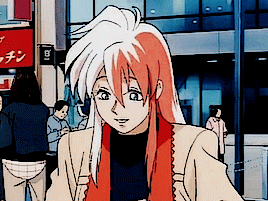
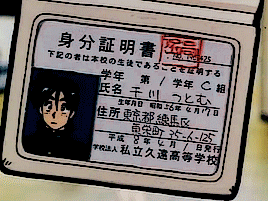

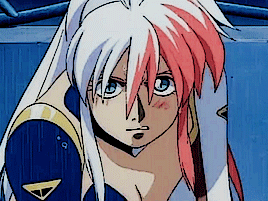
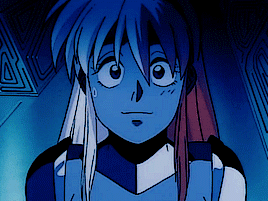
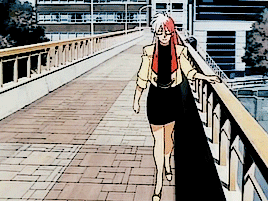

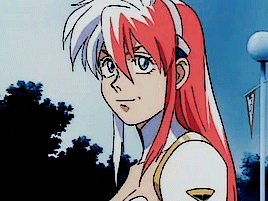
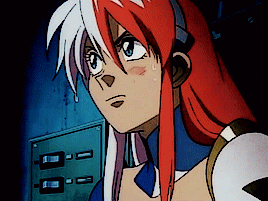

Birdy in Triangle Trial
#birdy the mighty#tetsuwan birdy#Birdy Cephon Altera#animations-daily#oldanimeedit#dailyanimatedgifs#dailyanime#animahub#anisource#anime#birdy#gifs#myedit#cc
457 notes
·
View notes
Text
Random Thought: Why does all "90's Anime style" fanart just look like Sailor Moon?
Okay, obviously not all fanart looks like it. But if you were to type in "90s anime style" here on Tumblr or DeviantArt at the time of this post, it at least seems to be the majority stand-in for 90s anime aesthetic, right? Especially in the characters' eyes.
Don't me wrong, this is not a knock against Sailor Moon. It is a great anime, and the collective character designs by Kazuko Tadano, Ikuko Ito, and Mari Tominaga among other staff are iconic. So iconic that Tadano was brought back as the character designer for the latest Sailor Moon movies. That is quite the staying power.
But let's be fair, there are plenty of 90s anime out there that can also be used as inspiration. So, here are the names of 11 character designers alongside some gifs of shows/projects they worked on in that role. Some you may not know but you've seen their work, and others you probably know for their distinct art style or association with a franchise.
Things worth noting: First, the years listed here with some anime may reflect when the artists' work started airing, rather than when the anime itself actually started. Some folks listed here enter their projects mid-production in other roles, while others are in the role from the start. Second, each entry will list 1 or 2 projects aired/released during the 90s, but it will be noted if the artist's role continues beyond that with certain franchises. Lastly, these artists are listed in no particular order, so no "top 11" hierarchy. With that said, here's our examples:
Hisashi Eguchi (Roujin Z[1991], Sonic the Hedgehog CD [1993])
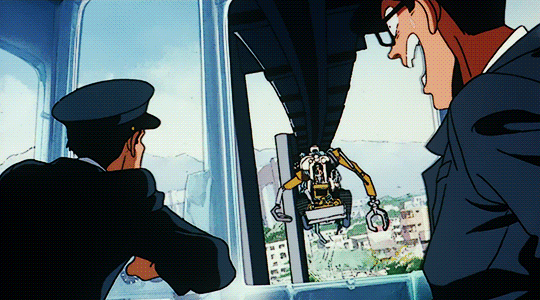
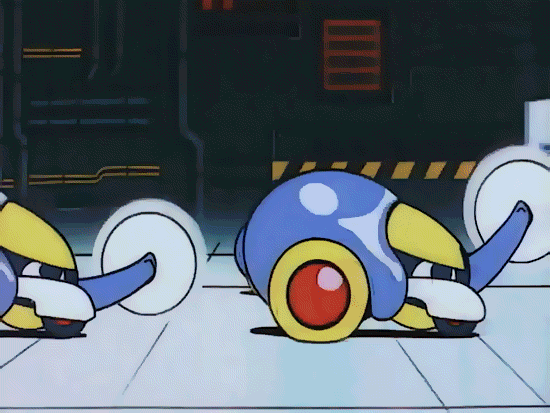
2. Katsuyoshi Nakatsuru(Dragon Ball franchise (Z [1993-96], GT [1996], Daima [2024]), Digimon franchise [1999-2002, 2019-2023])

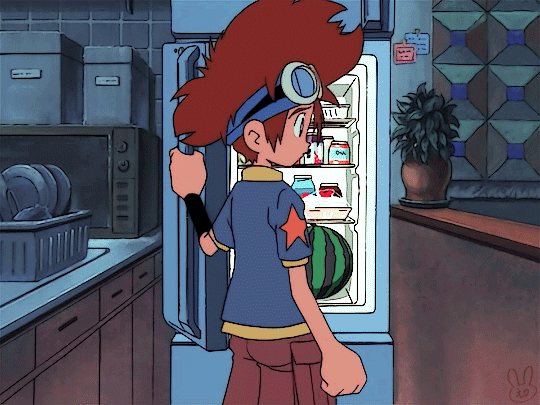
3. Kumiko Takahashi (Cardcaptor Sakura [1998-2000], Birdy The Mighty[1996])

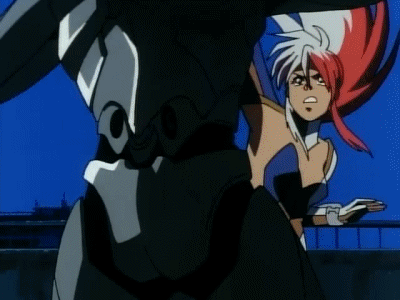
4. Takahiro Yoshimatsu (Trigun[1998], Slayers franchise[1995-97])

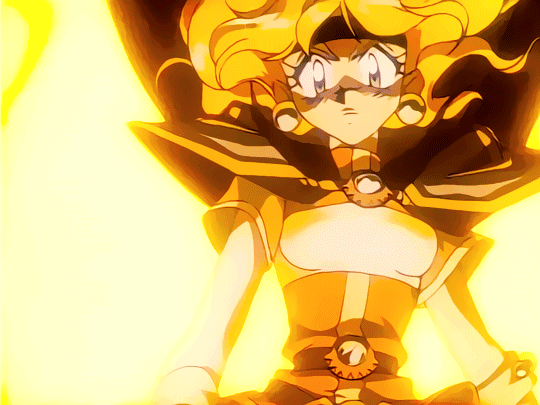
5. Atsuko Nakajima (Ranma 1/2[1989-1992], You're Under Arrest[1996])

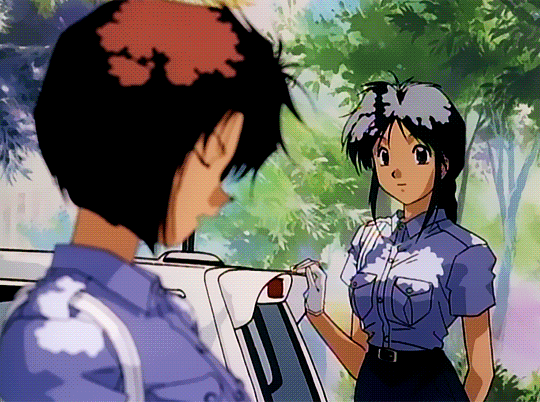
6. Sayuri Ichiishi (Pokémon[Pokémon design: 1996-present, human character design: 1996-2017])

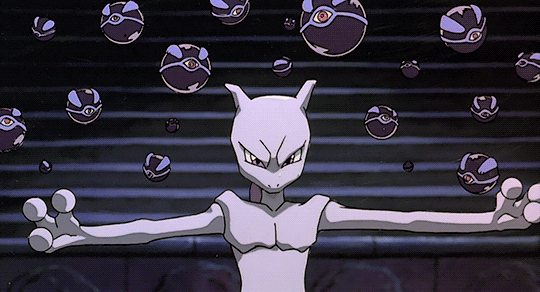
7. Atsuko Ishida (Magic Knight Rayearth[1994-1995])
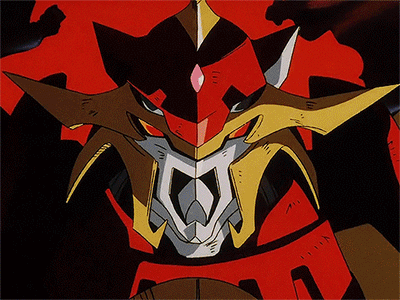
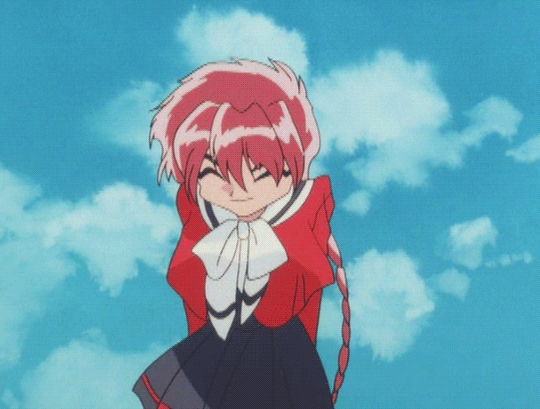
8. Masaya Onishi (Yu Yu Hakusho[1993-1994])
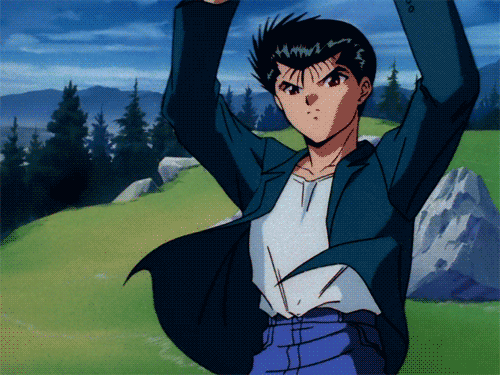

9. Toshihiro Kawamoto(Cowboy Bebop[1998-1999], Mobile Suit Gundam: The 08th MS Team[1996])
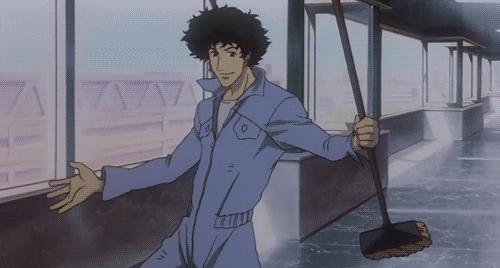
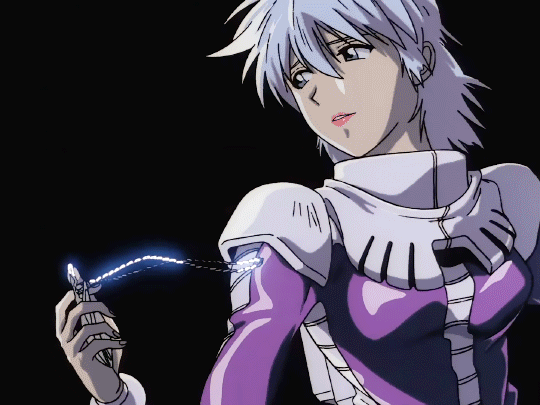
10. Hiroshi Osaka(Gundam franchise[Mobile Suit Victory Gundam: 1993-1994, Mobile Fighter G-Gundam:1994-1995])
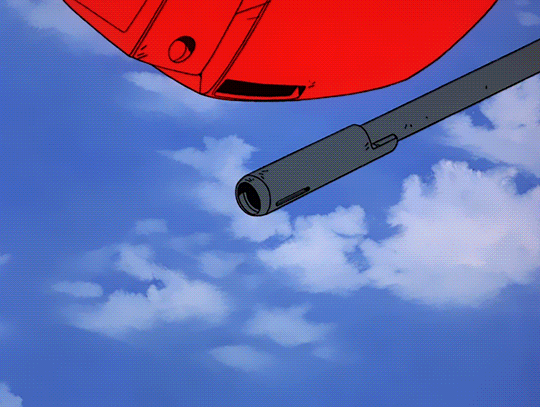
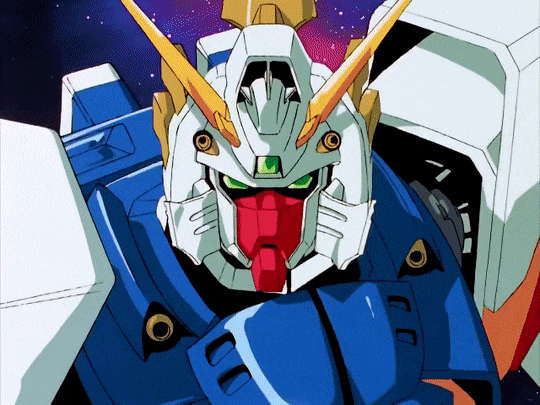
11. Yoshiyuki Sadamoto(Nadia: The Secret of Blue Water[1990-1991], Neon Genesis Evangelion franchise[1995-1997, 2007-2021])

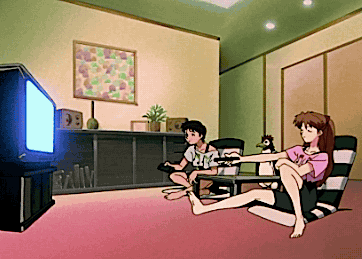
Might've leaned a bit more on the Shonen side of things than Shojo, but I hope you can see my point😅. There are tons of 90s anime out there with their own unique feel and aesthetic. These are only 11 names that I found.
For anyone drawing 90s anime style fanart, I hope this has given you some inspiration, and I encourage anyone reading this to look up your favourite anime on Anime News Network's encyclopedia and see who's responsible for helping bring your favorite characters to life on screen and what other shows they've worked on.
#90s anime#anime aesthetic#sonic cd#gundam#yu yu hakusho#dragon ball#digimon#digimon digital monsters#pokemon#pokemon anime#cardcaptor sakura#slayers#the slayers#trigun#birdy the mighty#tetsuwan birdy#ranma 1/2#ranma ½#you're under arrest#taiho shichauzo#magic knight rayearth#neon genesis evangelion#nadia the secret of blue water#roujin z
179 notes
·
View notes
Text
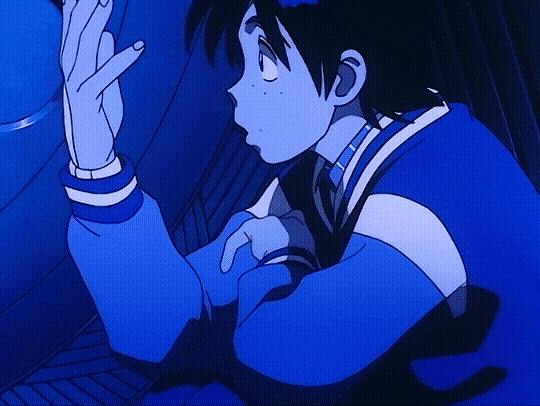
648 notes
·
View notes
Text
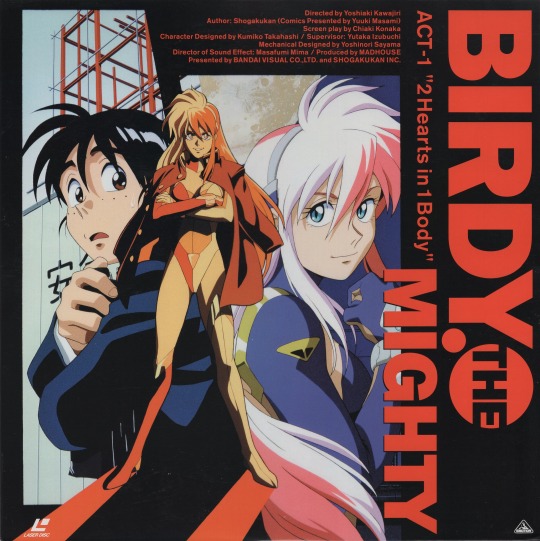

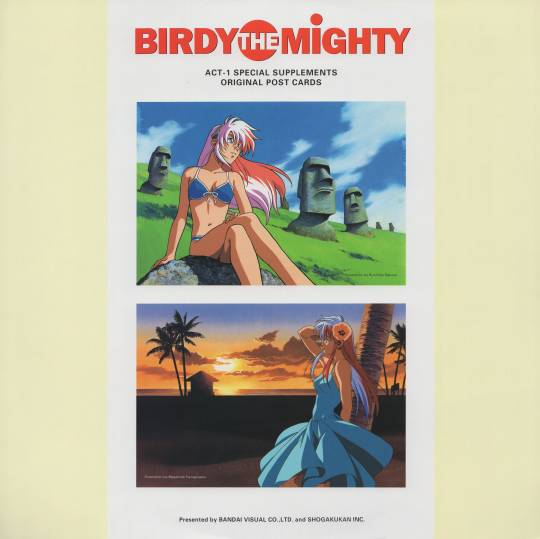










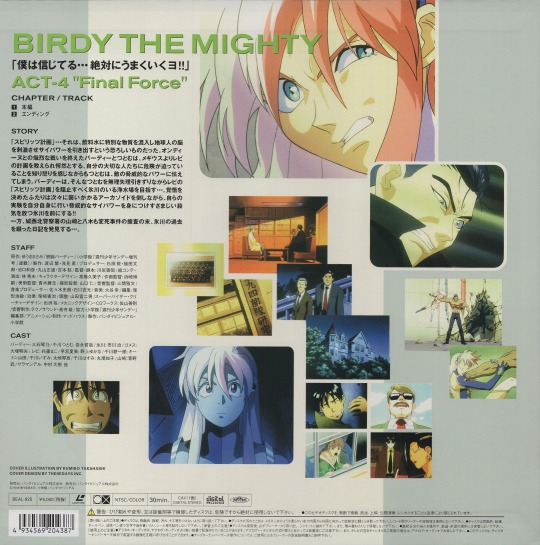


BIRDY THE MIGHTY
87 notes
·
View notes
Text

watched Birdy The Mighty (1996 OVA)! this series rules!
it's fairly infrequently I come away from something with no real criticisms but the Birdy OVAs are like, flawless scifi pulp with a cool heroine and striking gimmick.

I feel like something that really sets Birdy apart from its peers is just how committed it is to how /cool/ she is first and foremost. The camera doesn't really ogle her and she's allowed to just be a cool action girl with sweet moves and a skimpy outfit. She's a hottie that is allowed to get a lot of her appeal through her power and attitude, rather than the director pausing a scene to be like "ohhh wardrobe malfunction! ohhh titties!"
Like sure she's pretty, but she also gets to have unflattering angles and goofy expressions and honest to goodness fun in these OVAs! It's so refreshing that she keeps her dignity throughout the entire production. I cannot stress this enough.

Something else is how like... sweet its central gimmick is? For series context, Birdy is a space cop who accidentally kills a teen kid on a routine patrol on earth and has to act as his body-sharing life support as recompense; and he acts as her sort of guide on earth and alter-ego as they get into trouble. It's shockingly cool about this, though? Again, there's never like a breach in dignity between the two... they take a while to get used to their situation and while it's definitely played for shenanigans, it's never like, hostile?
I would argue quite the opposite, actually, and this is something that a lot of people have pointed out already; Birdy is pretty loaded on its own with transgender themes in a way that just feels really refreshing; two identities in one body coming to an understanding of each other in tumultuous times on the road to adulthood. Episode 3 feels like it comes pretty close to being explicit with it; again, SO refreshing to have this kind of theme just occur in a work.

Anyways, seek this out if you haven't seen it already! It's guaranteed to be a great afternoon if you dig fun and flirty sci-fi action! The way of the future, this one.
#transmission 309#tetsuwan birdy#birdy the mighty#god i love these ovas#im scared going back to recode that it'll flop for me. but i will always have the ovas.
106 notes
·
View notes
Text
1996 anime

#1996#rurouni kenshin#samurai x#detective conan#case closed#vision of escaflowne#tenkuu no escaflowne#birdy the mighty#tetsuwan birdy#X#x the movie#kidou senkan nadesico#martian successor nadesico#jigoku sensei nube#hell teacher nube#btx#sanctuary#akachan to boku#baby and me#kodomo no omocha#kodocha#remi nobody's girl#ie naki ko remi#انا واخي#دروب ريمي#retro anime#old anime#classic anime#90s anime#nostalgia
115 notes
·
View notes
Text
Five underappreciated anime that I would recommend!
1. Canaan (2009)
This is, from what I understand, an adaptation of a side-story chapter for the visual novel series 428: Shibuya Scramble, guest-written by Nasu Kinoko and guest-illustrated by Takeuchi Takashi. That is to say, the Type-Moon guys — the creators of Tsukihime, Kara no Kyoukai, and the now-legendary Fate/Stay Night. However, Canaan doesn’t take place in the Type-Moon shared universe(s), since it’s for another company’s property.
That being said, the anime adaptation is quite comprehensible on its own terms, likely due to the adaptation being written by the prolific and highly skilled screenwriter Okada Mari (Hanasaku Iroha, O Maidens In Your Savage Season, Mobile Suit Gundam: Iron-Blooded Orphans, Maquia). Her writing imbues the narrative with enough emotional intensity to make up for the occasionally-convoluted nature of the plot, and the backstories of the characters are hinted at just enough so that the viewer can understand their relevance, without taking up too much precious screen time. It can be a little hard to follow at points, but I ended up understanding it decently well anyway.
The production values are very high indeed, due to the anime being produced by P.A. Works, and directed by Andoh Masahiro (Sword of the Stranger, Hanasaku Iroha, O Maidens In Your Savage Season). The action animation is consistently stunning, the characters are beautifully expressive, and the overall look of the show is fantastic.
And the voice acting is an absolute treat, with the lead role of Canaan herself taken by Sawashiro Miyuki, the antagonist role of Alphard taken by Sakamoto Maaya, and Nanjou Yoshino in the role of Oosawa Maria, the POV character for a lot of the story. The supporting voice cast is packed with talent too — Hamada Kenji, Tanaka Rie, Nakata Jouji, Tomatsu Haruka, Hirata Hiroaki, Noto Mamiko, and even Ootsuka Akio in a minor role!
The premise is sort of a science fiction type of thing, but set in the (quasi-)contemporary location of 2000s China, where outside of the sci-fi conceit, the setting is largely realistic. The tone and mood is mostly that of an action thriller, with some nail-biting suspense here and there, but there are some beautifully soft and tender moments as well — often involving Canaan and Maria. Yes, folks, this has yuri in it, although it’s (strongly) subtextual.
Anyway, I would recommend this to people who love Ghost in the Shell: Stand Alone Complex, Kara no Kyoukai, Fate/Zero, and probably also Cowboy Bebop.
2. Tetsuwan Birdy OVAs (1996)
This is distinct from the later adaptation of the original Tetsuwan Birdy (Birdy the Mighty) manga, called Tetsuwan Birdy Decode, which came out in the late 2000s — this one came out in 1996 and was produced by Studio Madhouse in their prime.
The main characters are Senkawa Tsutomu (voiced by Iwanaga Tetsuya), a hapless teenager who gets accidentally killed(!) by an alien spaceship on his way to school one day, and Birdy Cephon Altirra (voiced by Mitsuishi Kotono), a human-looking alien and an intergalactic government agent who saves Tsutomu by merging her body with his. Effectively, they become two people in one body, which can shift between the forms of Birdy and Tsutomu…. except Birdy still needs to deal with all the rogue aliens who threaten the safety of the galaxy, while Tsutomu needs to study for his high school entrance exams. From what I’ve been told, the premise is fairly reminiscent of Ultraman and other classic tokusatsu series.
It’s four tight episodes of classic ‘90s OVA goodness, with a fun and slightly silly sci-fi concept that is nonetheless wrung for some surprisingly effective drama at times. The main thrust of it, though, is action comedy — and it definitely delivers on that front. The fight scenes are superbly animated, including some early-career work from now-legendary animator Suzuki Norimitsu, and the character designs by Takahashi Kumiko (Witch Hunter Robin, Snow White with the Red Hair, Cardcaptor Sakura) are amazingly expressive. Birdy’s striking asymmetrical design is a particular favourite of mine. The direction by Kawajiri Yoshiaki (Cyber City Oedo 808, Ninja Scroll, Vampire Hunter D) is solid, and the writing is quite serviceable despite the brevity and premise.
Overall, I wouldn’t say it’s much of an intellectual watch, but if you just want a fun action-comedy ride with an extremely charismatic female protagonist and stunning animation quality, Tetsuwan Birdy is likely to be your jam. I’d recommend it to people who enjoy classic tokusatsu series, the original ‘90s Sailor Moon anime, and the less-depressing parts of Neon Genesis Evangelion.
3. Noir (2001)
This anime series is perhaps not as underappreciated as the others on this list, but I do still feel that not enough people have seen it. It was made by the studio Bee Train, and it’s the first entry in their so-called “Girls with Guns” trilogy (which isn’t actually a coherent trilogy, since they’re three different stories). The series was made right at the end of the cel-anime era, before the transition to digital colouring and compositing, so the masters were shot on film, but it was also made at the beginning of the slow transition to widescreen TV broadcasts, so it’s one of the very rare cel anime that’s in 16:9. This allows for a beautifully detailed look that, IMO, serves to offset the occasionally-limited animation and the frequent re-use of footage.
The premise is basically “secret assassins in France are caught up in weird intrigue and conspiracies”; as such, there’s a lot of very fun gunplay and kickass fight scenes, but also a lot of suspense and mystery. The writing is a little bit slipshod at times, but it ends up holding together, and the characters and (especially) the fantastically moody vibe make the show worth watching.
The characters are imbued with a lot of life and colour, both by their extremely attractive designs and by their voice actors’ wonderful performances. Mireille Bouquet, a young Corsican assassin and one of the two protagonists, is voiced by Mitsuishi Kotono; Yuumura Kirika, the other main protagonist who is a Japanese schoolgirl who has seemingly lost all her memories (but not her exceptional assassin skills), is voiced by Kuwashima Houko; and the mysterious Chloe, who shows up partway through the show, is voiced by Hisakawa Aya. There are definite yuri vibes between Mireille and Kirika, but as with Canaan, it’s all subtextual.
The main draw of the show, though, is its phenomenal soundtrack, courtesy of Kajiura Yuki (.hack//Sign, Kara no Kyoukai, Fate/Zero, Sword Art Online, Demon Slayer) in her very first anime scoring gig. It’s at times propulsive, at times dark and moody, at times beautifully serene, at times melancholy and nostalgic — and it’s utterly memorable.
I would recommend Noir to anyone who likes Canaan, Witch Hunter Robin, Ghost in the Shell, or anyone who just wishes that James Bond were a woman.
4. Flip Flappers (2016)
This anime was produced at Studio 3Hz and directed by Oshiyama Kiyotaka, in a dazzling yet underappreciated directorial debut that was presaged by his impressive animation work on Dennou Coil, Space Dandy, A Letter to Momo, The Secret World of Arietty, and The Wind Rises. Owing to this extremely solid animation background, Oshiyama was able to recruit a lot of prime animation talent for Flip Flappers, and it definitely shows in the stunning sakuga of the wild action sequences that pepper the show’s narrative.
While the fantastic animation is a key draw of this show, the sheer creativity in the worldbuilding, conceptual, and visual design spheres also contribute to its inimitably psychedelic look and feel. The landscapes of the worlds contained in Pure Illusion — the dream-realm that the protagonists enter each episode at the behest of a mysterious scientific organisation — and of the “real” world are whimsical, storybook-like, and slightly “off” in a slightly unsettling but compelling way.
The dreamlike atmosphere pervades the narrative as well — very little about the mechanics of the world is specified out loud, relying heavily on symbolism and visual storytelling to do the heavy lifting for the audience’s understanding. This might be a turn-off for audiences who prefer to have things spelled out for them clearly, but the point of this story is not always to make perfect logical sense, but rather to work on an emotional and metaphorical level. And work, it certainly does.
The episodic structure involving the various worlds of Pure Illusion explores the concept of the Umwelt (the individual sensory “world” of a person or organism), as well as some Jungian concepts and archetypes, in order to express the strange and sometimes-scary developmental stage of adolescence. The characters of Cocona (voiced by Takahashi Minami) and Papika (voiced by Ichimichi Mao) undergo a metaphorical and literal puberty, a coming-of-age similar in some ways to that experienced by the protagonist of FLCL, but with significantly more yuri. In fact, this show has the most outright yuri of any of the anime on this list. But that isn’t very strange for what is essentially a psychedelic magical-girl show: lots of magical-girl anime seem to include homoerotic vibes in some form or another, from Sailor Moon to Nanoha to Madoka.
There are some minor flaws in the storytelling towards the end, IMO, but overall it’s a wonderfully impactful emotional journey to watch Flip Flappers. Plus, the OP and ED are both extraordinarily catchy tunes that I’ve found myself humming on many an occasion.
I’d recommend this anime to anyone who loves weird magical-girl stuff, weird yuri, and/or amazing action animation.
5. Claymore (2007)
An adaptation of the manga by Yagi Norihiro, this anime is considered by many to simply be “basic”, or at least simply “inferior to the manga”. Now. I haven’t read the original Claymore manga (yet! I plan to eventually), but I found this anime to be compelling nonetheless. And if it really is the case that the manga is better, then I definitely look forward to diving in.
Having been produced by Studio Madhouse in the mid-2000s, it’s unsurprising that the vast majority of this anime was outsourced to Korean animation studio DR Movie, a longtime powerhouse subcontractor for both Japanese and American animation alike. That said, the direction of Tanaka Hiroyuki (director of a portion of Hellsing Ultimate and frequent close collaborator of Attack on Titan director Araki Tetsurou) remains sharp, compensating for the sometimes-limited animation with good storyboarding and a strong sense of mood and atmosphere.
Another aspect of Claymore which helps make up for the occasional visual shortcomings is the soundtrack by Takumi Masanori. The compositions are a mix of harder rock and electronic elements with a strong orchestral backbone, as befits a dark-fantasy setting and mood — the faster pieces are edgy and propulsive, very appropriate for the bloody action scenes, and the calmer pieces have a melancholic beauty to them that sticks in one’s memory. I wish the soundtrack were on Spotify, but alas, it is not.
The other sonic element that helps this anime out immensely is its absolutely STACKED voice cast. The main character, Clare, is voiced by Kuwashima Houko, in a fantastic yet understated performance. The other main character, Raki, is voiced by the less-well-known Takagi Motoki, but nearly all the other roles — including many bit parts — are filled with industry legends. Teresa is voiced by Park Romi, Miria is voiced by Inoue Kikuko, Irene is voiced by Takayama Minami, Rubel is voiced by Hirata Hiroaki, Priscilla is voiced by Hisakawa Aya, Ophelia is voiced by Shinohara Emi, and Jean (whom I cannot help but ship with Clare: there’s so much homoerotic tension there!) is voiced by none other than Mitsuishi Kotono. Yes, they got three of the original Sailor Senshi VAs — and I don’t know why that’s funny to me, but it is. And all of the voice actors deliver killer performances.
The premise of the show, before I completely forget to explain it, is that of a dark fantasy world where demons called youma ravage human settlements, with only the titular Claymores to protect humanity. They are a guild of platinum-haired and silver-eyed warrior women who possess superhuman fighting abilities, due to the fact that they’ve been fused with youma essence, and wield the massive broadswords that give them their name. Basically, (s)he who fights monsters must become (partly) a monster to do so.
I’ve heard the vibe of Claymore compared to manga like Berserk, and I don’t know how true that is (not having read the latter for myself), but there’s certainly a lot of bleakness and monstrosity in this fantasy tale. However, the Claymore manga was published in none other than Weekly Shounen Jump, so it’s perhaps unsurprising that the story remains resolutely forward-looking, the protagonists’ arcs focussing on the power of grit, determination, true friendship and loyalty, and protection of the weak and downtrodden. It’s never cynical or sarcastic — always straightforward and sincere despite the frequent darkness of the story.
The writing is consistently solid, even through the controversial anime-original ending (the manga continues long past the point where the anime cut things off), so I’m not sure who to point to for that: Yagi Norihiro for writing the original material, or Kobayashi Yuuko (JoJo’s Bizarre Adventure, Attack on Titan s1-3, Kakegurui, Casshern Sins) for adapting it cleanly for the screen? Either way, it made me want to read the manga to experience more of these compelling characters and their travails.
I would recommend this anime to those who enjoy Kill La Kill or RWBY, or just to those who enjoy powerful women hacking at monsters with massive weapons and making lots of blood spray out.
#anime recommendation#anime recs#flip flappers#tetsuwan birdy#birdy the mighty#claymore#noir#noir 2001#canaan#long post#personal#anime
101 notes
·
View notes
Text

by Esteban Barrientos
207 notes
·
View notes
Text
Another Plural headcanon that’s not really a headcanon: Birdy the Mighty /Tetsuwan Birdy
No idea why I watched this show as a young teen but this show has both an OVA (Tetsuwan birdy) and a rebooted anime (Tetsuwan Birdy:Decode) This one is also a fan-servicy shounen just like Rosario+Vampire but the action scenes are really good and Birdy is super strong and defies the whole damsel in distress trope that’s so common in shounen.
This series also has a cool history you can find a video explaining everything here

Minor spoilers just for the first parts
Basically while beating up a bad guy named Geega, A space federation officer named Birdy accidentally kills a random student named Tsutomu, Tsutomu wakes up thinking it was a dream.
The OVA and anime diverge a bit here, with the anime having him think he’s all alone and getting told by birdy who was in his brain that he’s not.
The OVA has Birdy take possession of his hand durning the admissions test and writes down all the answers super fast. He tries to stop the hand with his other hand after getting weirded out. Also when Birdy finally mind speaks in the OVA the translated English literally says “Let’s switch now” which is tulpa/plural terminology!!!
After a few more weird occurrences it’s explained that Birdy and Tsutomu have to share Birdy’s body for a while because his body needs to be reconstructed. Tsutomu kinda has to live his normal while Birdy typically switches back in whenever there’s another bad guy(or to get… ice cream?).

The OVA has the COOLEST switching transforms btw, Enough for me to go watch the whole OVA because I only ever saw the first season of the anime.
So more plural references/proof from the OVA, even though it’s kinda clear that they’re already canonically plural though.
-While eating dinner his sister asks him “Did you make up a new imaginary friend lately” referring to the fact that Tsutomu keeps talking to Birdy out loud. This also leads to weird scenarios where other people think he’s talking to them when he’s just talking to Birdy.
-When in danger, Birdy tries to switch, but can’t and says “We can’t switch until you open up your consciousness” Which is similar to how some systems have to have the person switched in become relaxed before switching
-Birdy can possess parts of the body while Tsutomu is technically switched in.
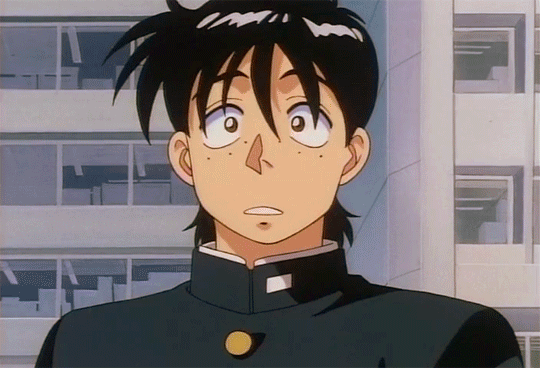
More switching gifs from the OVA because they’re the coolest.
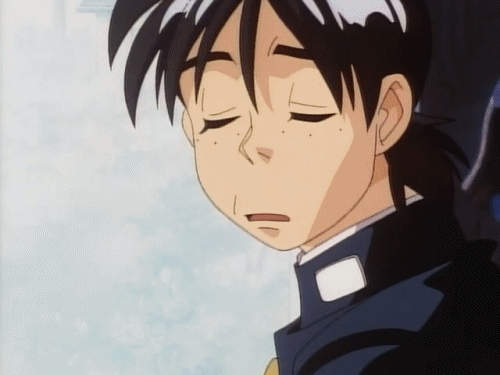


#tetsuwan birdy#birdy the mighty#anime#plural character#plural headcanons#pluralgang#endogenic#plural#plurality#endo safe#system#plural positivity#Birdy#systems#plural system
61 notes
·
View notes
Photo
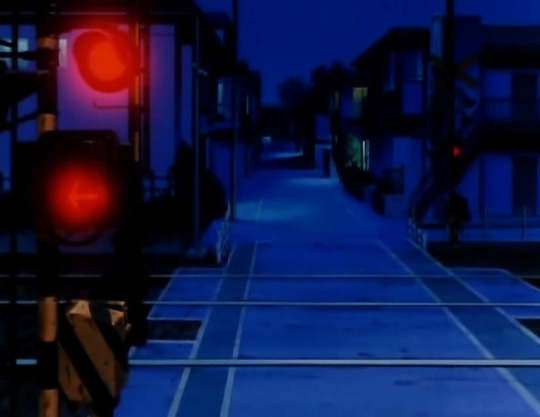


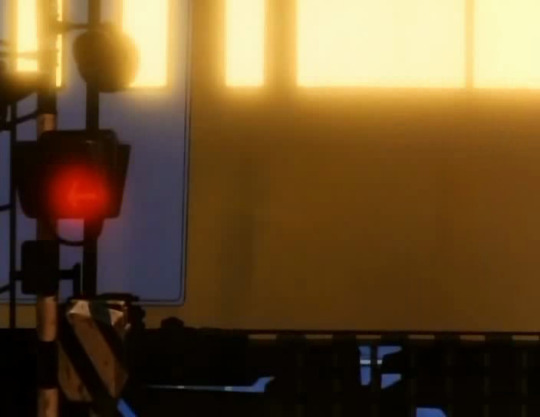


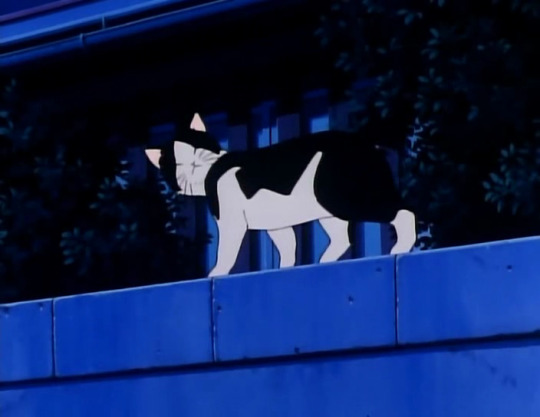


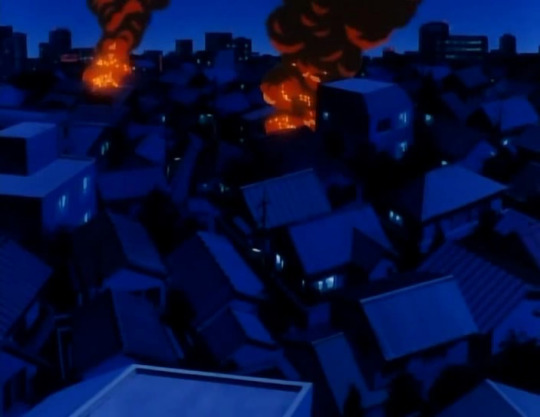
#anime#background#vintage anime#retro anime#animecore#90s anime#鉄腕バーディー#birdy the mighty#tetsuwan birdy
70 notes
·
View notes
Text


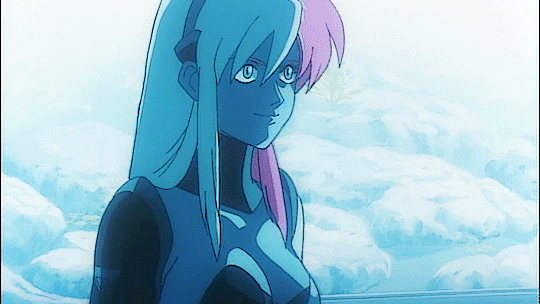

Birdy the Mighty (1996)
#dailyanimatedgifs#dailyanime#animations-edit#animahub#animationedit#animeedit#anisource#fymanganime#fyanimegifs#tetsuwan birdy#birdy the mighty#birdy#ova#90s#anime#gifs#myedit
175 notes
·
View notes
Text

635 notes
·
View notes
Text
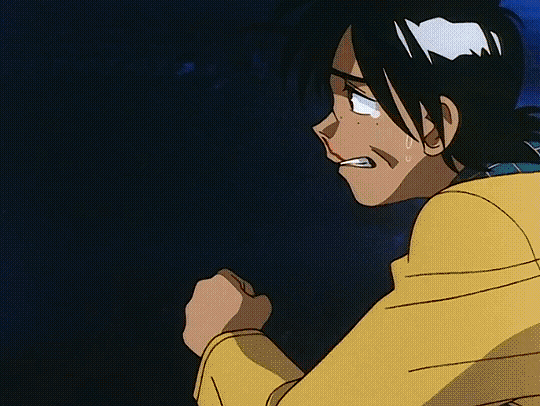
447 notes
·
View notes
Text
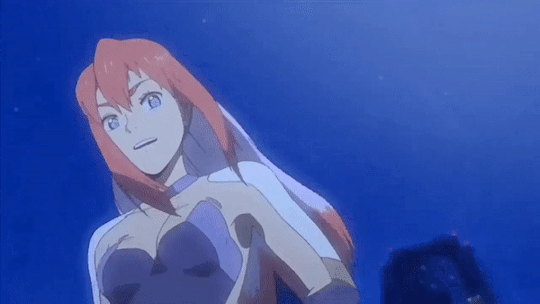
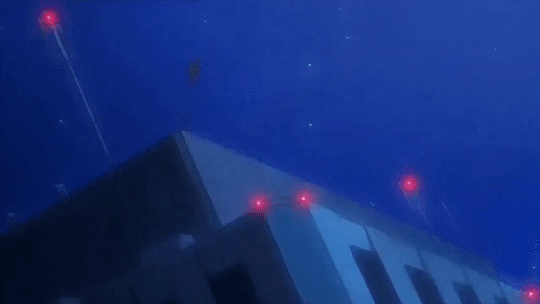



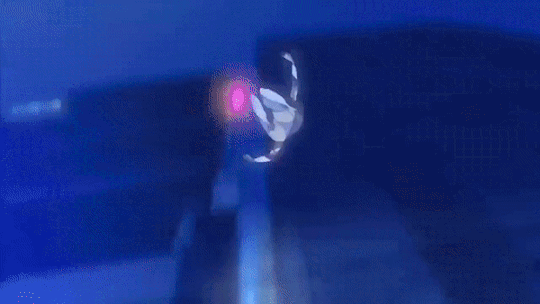
#birdy the mighty#birdy the mighty: decode#tetsuwan birdy#tetsuwan birdy: decode#birdy cephon altera#anime#2000s anime#gif#never made a gifset before#did i do good#tumblr would not accept this post on mobile for some reason and made me get on my laptop to post it#rude
24 notes
·
View notes
Text


thought the decode birdy transitions would be fun gifs. i was right :) whee
20 notes
·
View notes
Text

Warm up before other works. I really liked this anime! I think birdy’s design is so cool :’)
363 notes
·
View notes